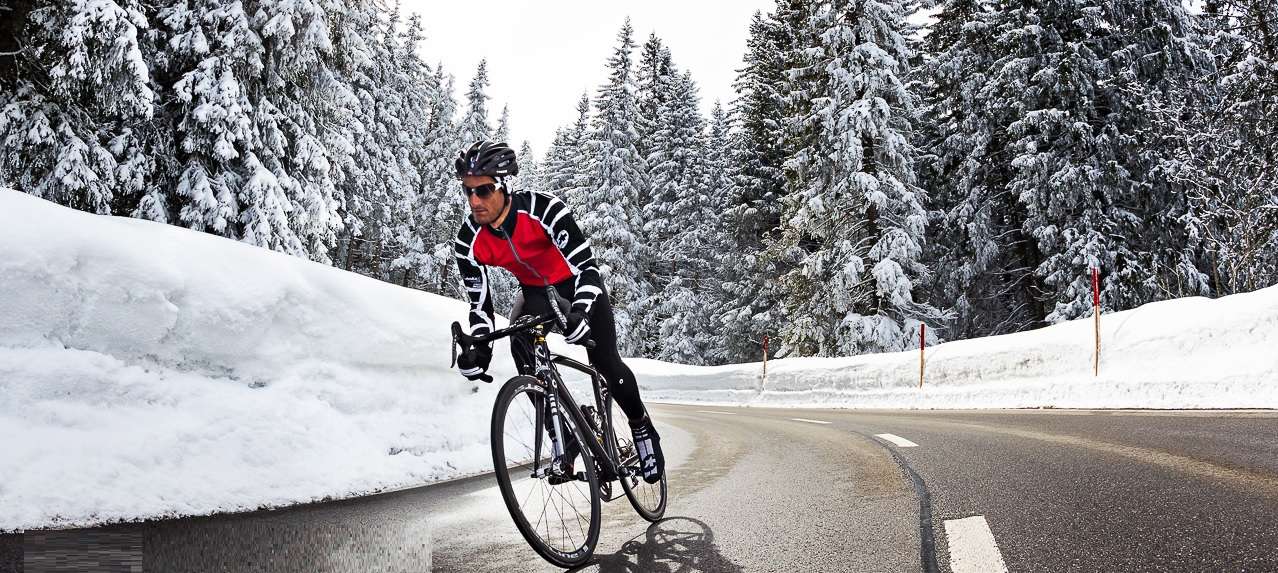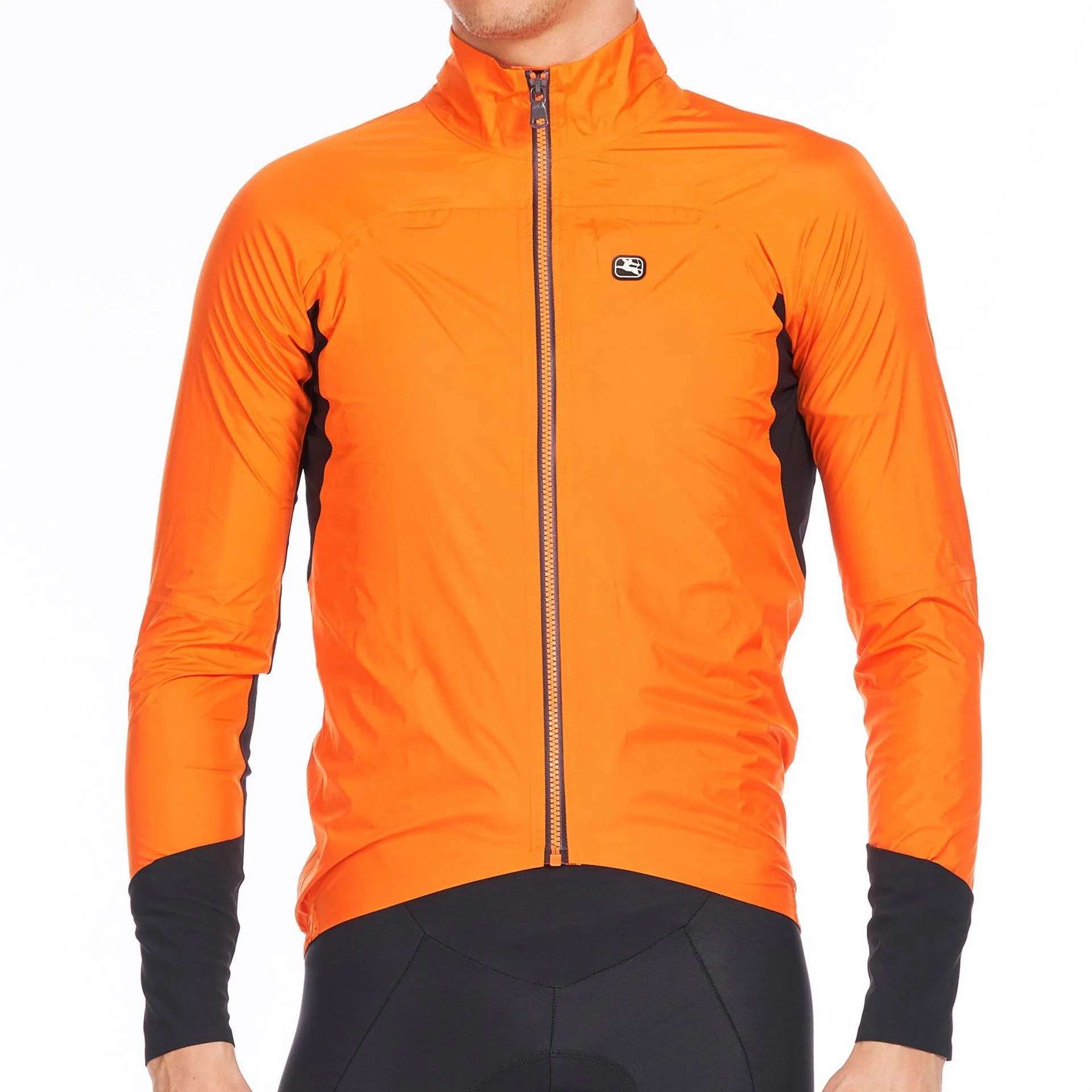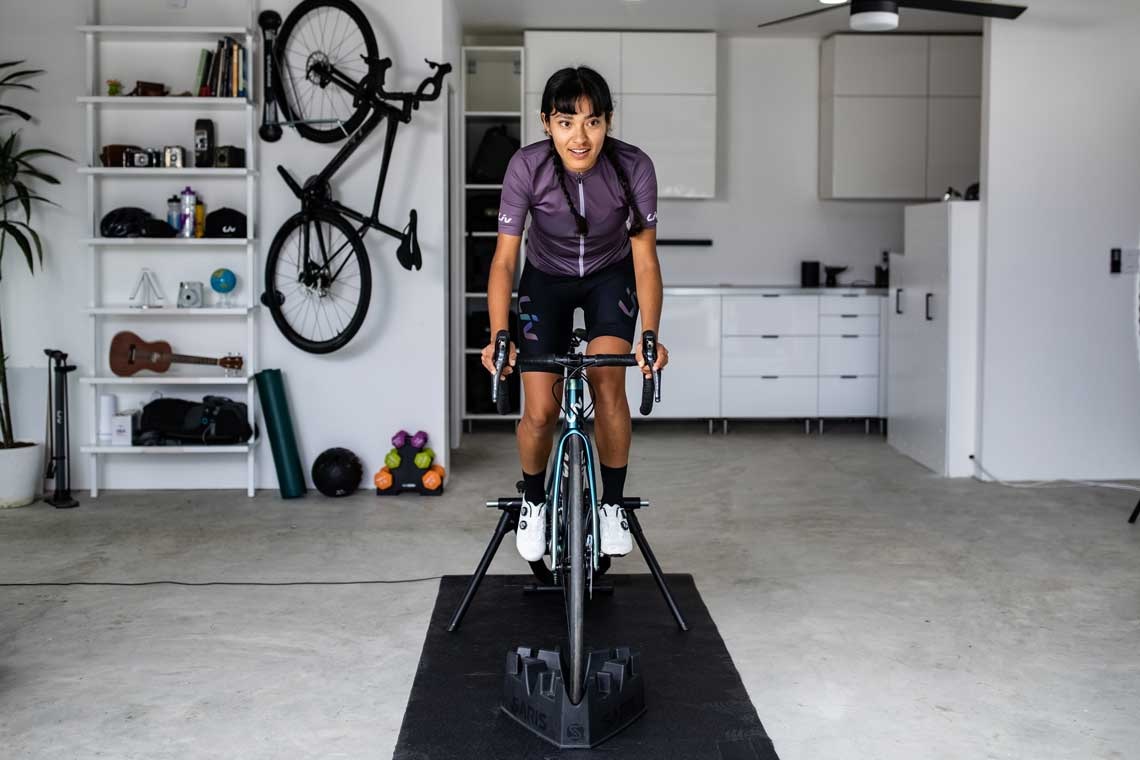Dress For Success On Winter Rides
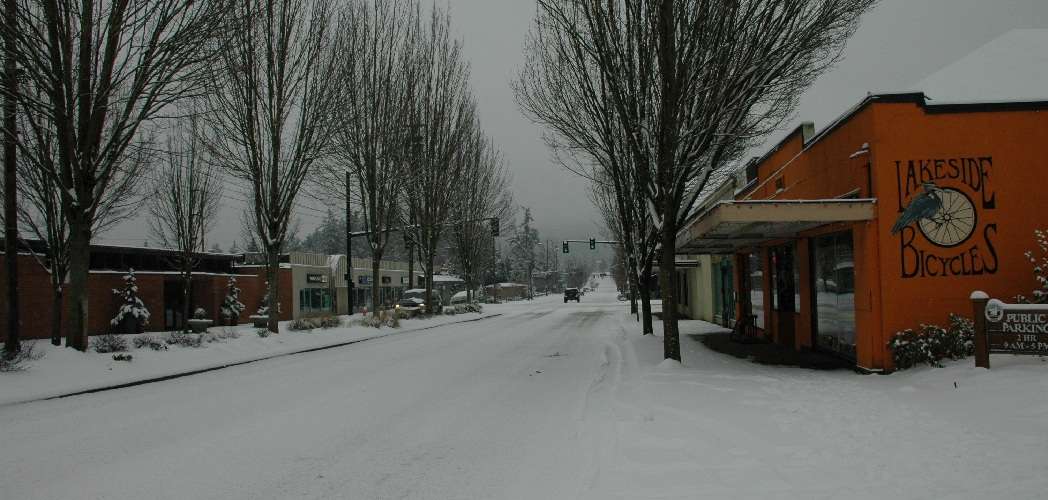
"Ride lots" is Eddy Merckx formula for his astonishing success. While nicely laconic, not particularly informative. In any case, few of us are at any risk of winning (or entering) a Spring Classic or a Grand Tour. However, if you plan on maintaing some part of your summer fitness into next spring, then riding through the winter is a necessity. Whether you're commuting to work, training for the upcoming season or can't bear the thought of being off your bike for more than a few days, there are plenty of reasons to ride through the winter. To help, here's Lakeside Bicycles' advice on how to brave the cold, windchill and snow.
Some of us, even non-masochists, have the discipline to ride in doors for hours and months at a time. For most people Winter simply means getting fat or testing your resolve and getting cold and wet.
Selecting the right combinations of the right garments is critical. Modern foul weather gear does not come cheap (the best of it costs a fortune), but with an effective wardrobe only two things can keep you indoors: ice or laziness.
Winter Wear
The most important factor in winter riding is proper clothing. When you ride in winter low temperatures and bulky clothing offer little opportunity to shed clothing as your body warms. Thermal regulation comes down to zippers and fabric breathability, so combinations of the right garments are important. If you dress too warmly, exertion will quickly lead to overheating and sweating; which can in turn lead to catching a chill which will convert a cold winter ride to utter misery. Contrarily, insufficient clothing is also risky. If you leave the house and your core temperature drops too far, no amount of exertion will raise it. That's why it's crucial to check the thermometer before you leave and consider these four crucial areas when deciding what to wear.
Managing your temperature is one thing, staying dry is another. It is almost impossible to stay completely dry really wet weather. Waterproof garments and accessories help, but over the course of a long ride, it is only a matter of time before water works its way in. Aggressive selection of textiles, proper design and selection of correct fit will all contribute to improved function. For a Graphical Outline of Cycling Winter Wear Options, Click Here.
Head
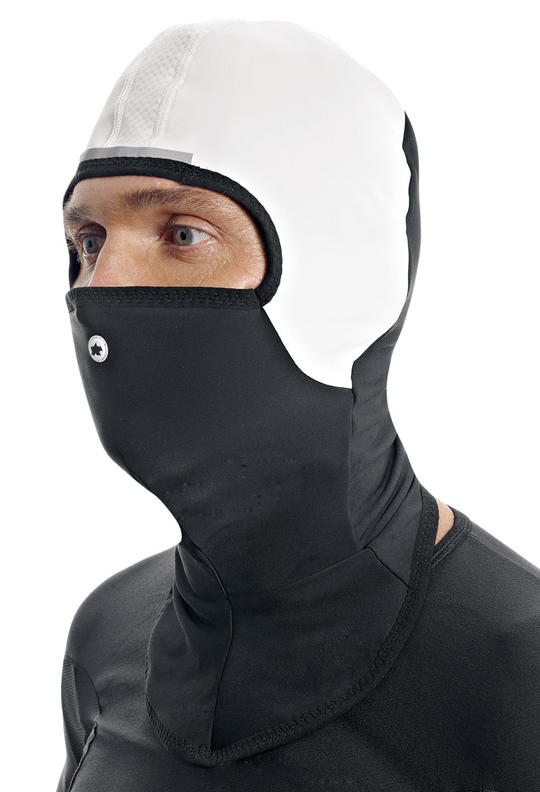 In mild winter temperatures a helmet or helmet over a cycling cap is sufficient to keep your head warm. When the mercury drops, consider a thin winter hat that fits beneath your helmet. This will warm your head even at 20 degrees Fahrenheit. Protecting your face is more difficult due to the windchill generated by cycling speeds. A balaclava (Right) or the technical cap are excellent solutions. They provide a thin, moisture-wicking layer for your head and the balaclava protects vulnerable facial tissue and covers your mouth keeping your breath warm. Be sure to use goggles or glasses with ventilation or anti-fog protection to prevent fogged vision.
In mild winter temperatures a helmet or helmet over a cycling cap is sufficient to keep your head warm. When the mercury drops, consider a thin winter hat that fits beneath your helmet. This will warm your head even at 20 degrees Fahrenheit. Protecting your face is more difficult due to the windchill generated by cycling speeds. A balaclava (Right) or the technical cap are excellent solutions. They provide a thin, moisture-wicking layer for your head and the balaclava protects vulnerable facial tissue and covers your mouth keeping your breath warm. Be sure to use goggles or glasses with ventilation or anti-fog protection to prevent fogged vision.
Torso
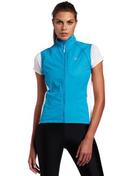 If your torso stays warm, so will your entire blood supply. A warm core helps keep your extremities warm too. Start with a moisture-wicking base layer to move perspiration away from your body and keep your skin dry. Avoid cotton, which traps moisture next to your skin and makes you wet and cold. The amount and types of layers worn over the initial layer depend on the weather conditions and your ability to remove the layers if necessary. Long-sleeve jerseys with full zippers are excellent. On top, wear a windproof and waterproof layer. Racers training in the winter may prefer a jacket or vest like the Assos IG.Falkenzahn (photo) that's only waterproof in front, allowing heat to escape in back. Commuters, who ride less vigorously and sweat less, may prefer a waterproof jacket.
If your torso stays warm, so will your entire blood supply. A warm core helps keep your extremities warm too. Start with a moisture-wicking base layer to move perspiration away from your body and keep your skin dry. Avoid cotton, which traps moisture next to your skin and makes you wet and cold. The amount and types of layers worn over the initial layer depend on the weather conditions and your ability to remove the layers if necessary. Long-sleeve jerseys with full zippers are excellent. On top, wear a windproof and waterproof layer. Racers training in the winter may prefer a jacket or vest like the Assos IG.Falkenzahn (photo) that's only waterproof in front, allowing heat to escape in back. Commuters, who ride less vigorously and sweat less, may prefer a waterproof jacket.
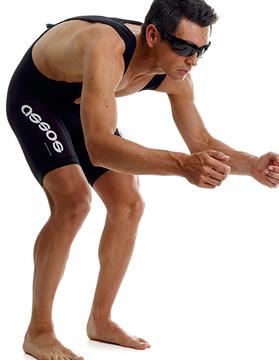 Bib Tights, with or without chamois, made with a fleece lined textile such as Roubaix fabrics will keep your leg muscles warm even in the freezing cold. Many manufacturers incorporate Wind-Stopper® panels in front of the bib and knees for added strength and protection. Wind-Stopper® will prevent evaporative cooling, allowing you to be warm if not completely comfortable should you get wet. When trying on Bib tights (as with bib shorts). they should feel comfortable when in a "riding" position.
Bib Tights, with or without chamois, made with a fleece lined textile such as Roubaix fabrics will keep your leg muscles warm even in the freezing cold. Many manufacturers incorporate Wind-Stopper® panels in front of the bib and knees for added strength and protection. Wind-Stopper® will prevent evaporative cooling, allowing you to be warm if not completely comfortable should you get wet. When trying on Bib tights (as with bib shorts). they should feel comfortable when in a "riding" position.
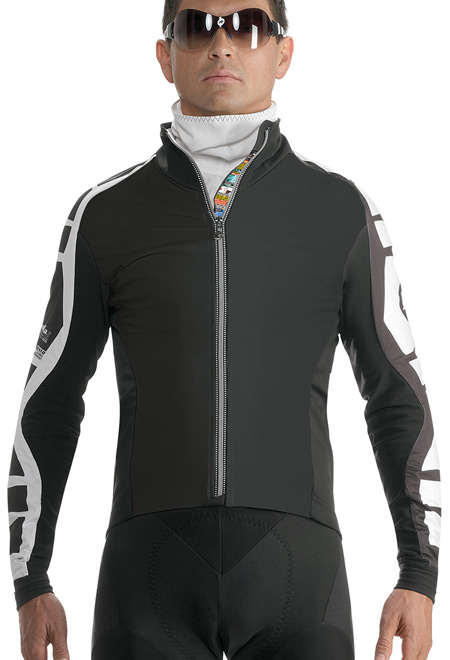 Jerseys and Jackets come with varying degrees of insulation with and without Wind-Stopper® or water proof layers so that the line between heavy jerseys and jackets is impossible to distinguish. For spring and fall rides a short sleeve jersey with arm warmers may be enough. For cold but not bitter days heavy weight, long sleeve jerseys made from Roubaix fabrics can suffice and, when combined with an insulated base layer, even replace jackets entirely. On really wet days you will simply need to layer down under a well designed (if pricy) water proof shell. Northwest winters are mild enough that you may never need to resort to more extreme solutions or even resort to an additional layer such as a vest.
Jerseys and Jackets come with varying degrees of insulation with and without Wind-Stopper® or water proof layers so that the line between heavy jerseys and jackets is impossible to distinguish. For spring and fall rides a short sleeve jersey with arm warmers may be enough. For cold but not bitter days heavy weight, long sleeve jerseys made from Roubaix fabrics can suffice and, when combined with an insulated base layer, even replace jackets entirely. On really wet days you will simply need to layer down under a well designed (if pricy) water proof shell. Northwest winters are mild enough that you may never need to resort to more extreme solutions or even resort to an additional layer such as a vest.
One important thing to remember when layering technical cycling clothing: Never layer two or more membrane fabrics (Wind-Stopper® or Gore-Tex®, for example) on top of one another. This will compromise their ability to breathe and lead to getting soaked by un-expelled perspiration or over heating.
Hands
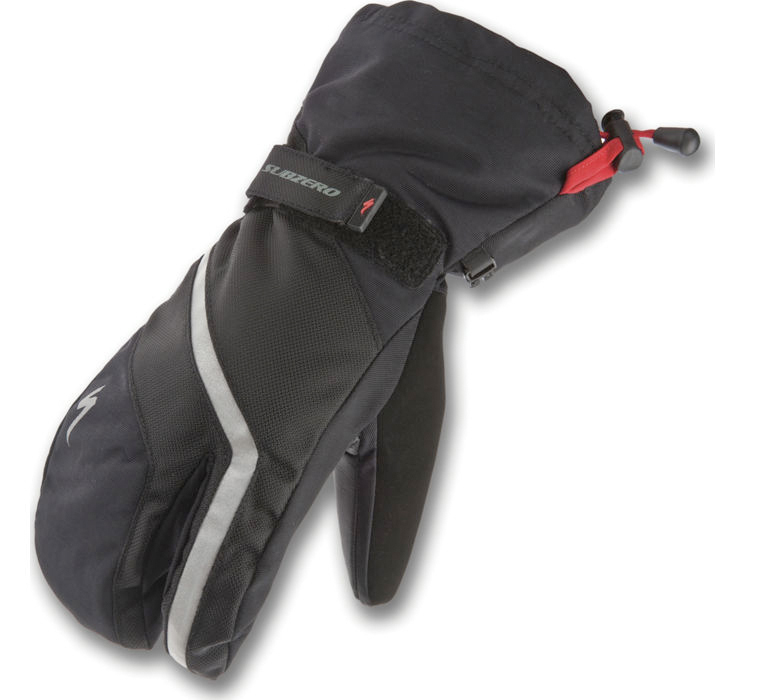 A well designed, carefully chosen selection of gloves (yes, you will need more than one pair) is essential for comfortable and safe winter riding. Once your fingers get really cold it can be impossible to warm them leading to hours of misery and possible injury. Even the relatively modest extremes found in the Northwest can necessitate the use of full on waterproof, heavy duty winter gloves such as the Specialized SubZero.
A well designed, carefully chosen selection of gloves (yes, you will need more than one pair) is essential for comfortable and safe winter riding. Once your fingers get really cold it can be impossible to warm them leading to hours of misery and possible injury. Even the relatively modest extremes found in the Northwest can necessitate the use of full on waterproof, heavy duty winter gloves such as the Specialized SubZero.
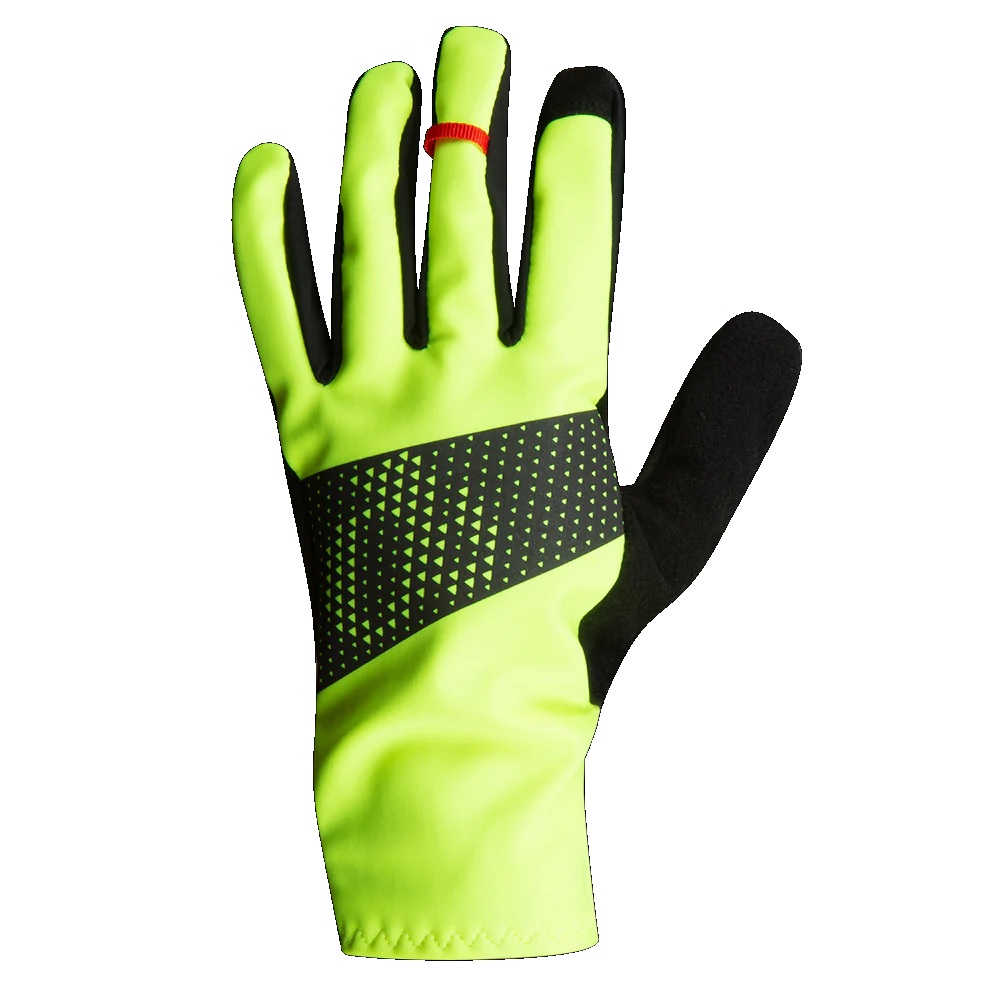 For spring and fall and light weight set of long fingered gloves may be sufficient, particularly if augmented by a pair of water proof shells such as the Assos ShellGlove_S7. These can be packed along in a jersey pocket, ready in the event of rain. For slightly colder weather a lightly insulated or Wind-Stopper® glove will usually be sufficient and, in the case of Wind-Stopper® gloves, even enough protection in for the wet.
For spring and fall and light weight set of long fingered gloves may be sufficient, particularly if augmented by a pair of water proof shells such as the Assos ShellGlove_S7. These can be packed along in a jersey pocket, ready in the event of rain. For slightly colder weather a lightly insulated or Wind-Stopper® glove will usually be sufficient and, in the case of Wind-Stopper® gloves, even enough protection in for the wet.
Keep in mind that the great Bernard Hinault still deals with the effects of frostbite suffered during his victorious assault on the 1980 spring classic: Liège-Bastogne-Liège (a race so horrible that only 21 out of 174 starters finished).
Feet
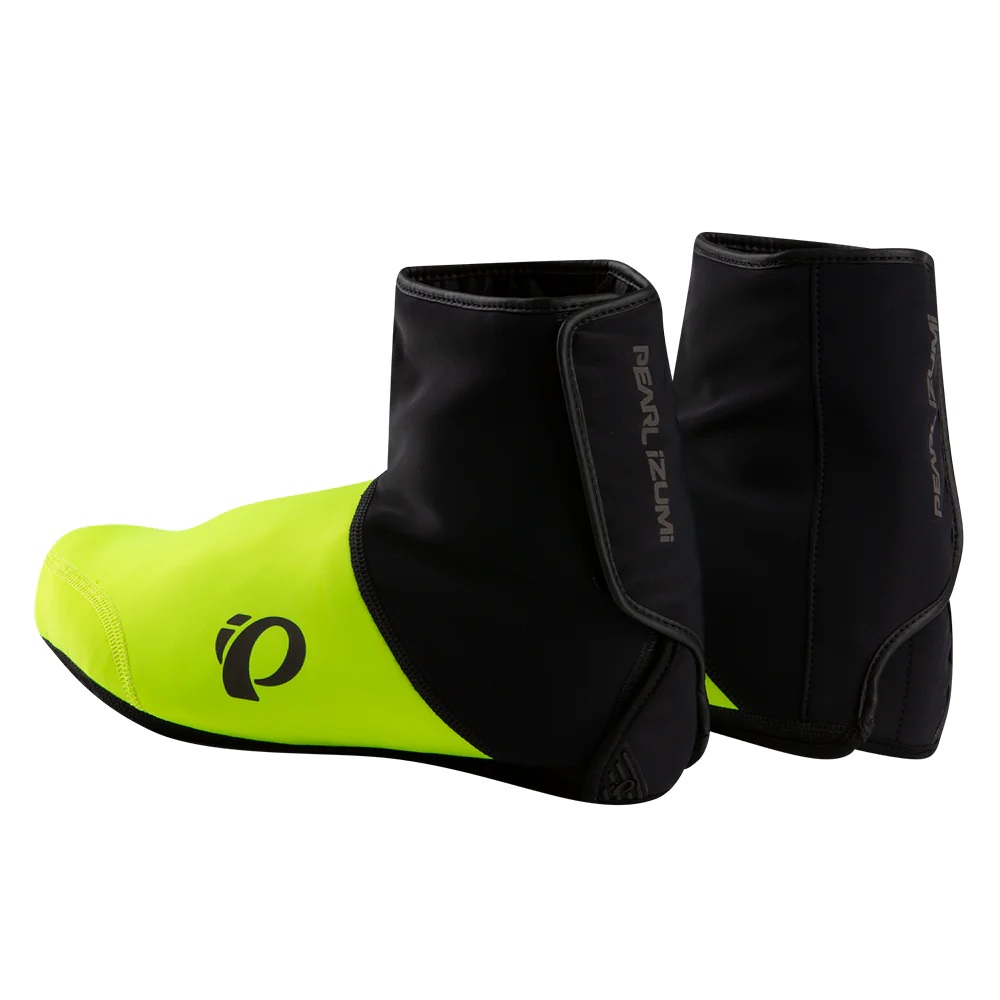 The most important factor in keeping your feet warm is the right pair of shoes. If yours fit too snugly they'll restrict the blood flow and you won't be able to wear warm socks, which are usually thicker than regular sports models. For socks, wear wool, which stays warm whether you're dry or wet. For added warmth, try thicker models, such as those designed for cross-country skiing.
The most important factor in keeping your feet warm is the right pair of shoes. If yours fit too snugly they'll restrict the blood flow and you won't be able to wear warm socks, which are usually thicker than regular sports models. For socks, wear wool, which stays warm whether you're dry or wet. For added warmth, try thicker models, such as those designed for cross-country skiing.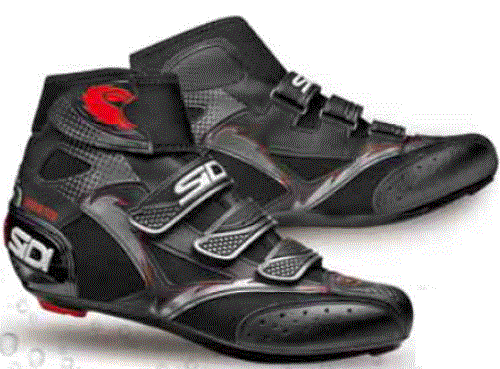 Most cycling shoes are designed with vents for normal conditions, but these let in the cold in winter. To keep the weather out, we recommend booties (left), which add a layer of protection and warmth. Or, if you decide you want the ultimate in warm tootsies, you might consider purchasing specially designed winter shoes (right), which are loaded with features to protect your feet.
Most cycling shoes are designed with vents for normal conditions, but these let in the cold in winter. To keep the weather out, we recommend booties (left), which add a layer of protection and warmth. Or, if you decide you want the ultimate in warm tootsies, you might consider purchasing specially designed winter shoes (right), which are loaded with features to protect your feet.
Legs
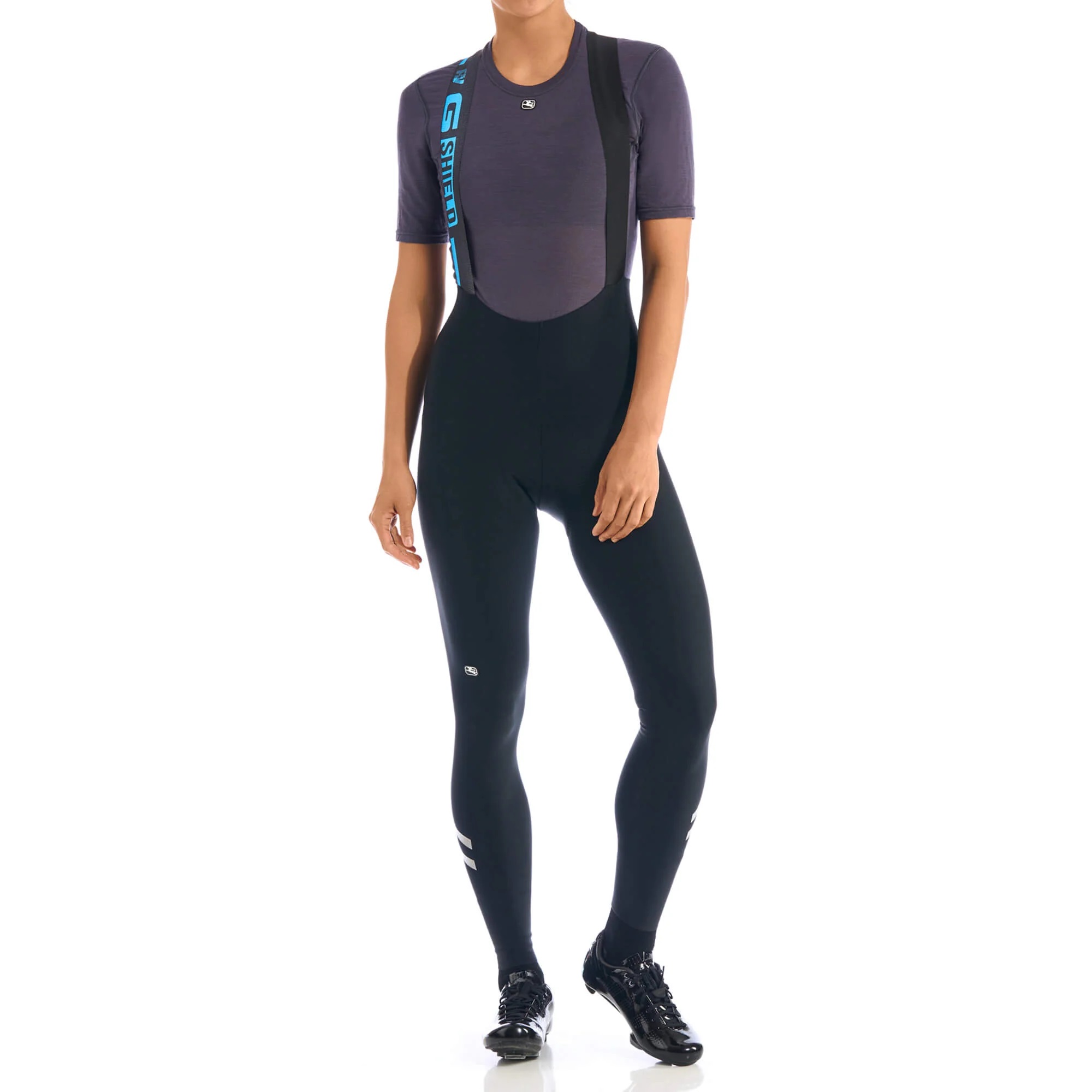 Legs may not seem as susceptible to the cold as other parts of your body,
Legs may not seem as susceptible to the cold as other parts of your body, 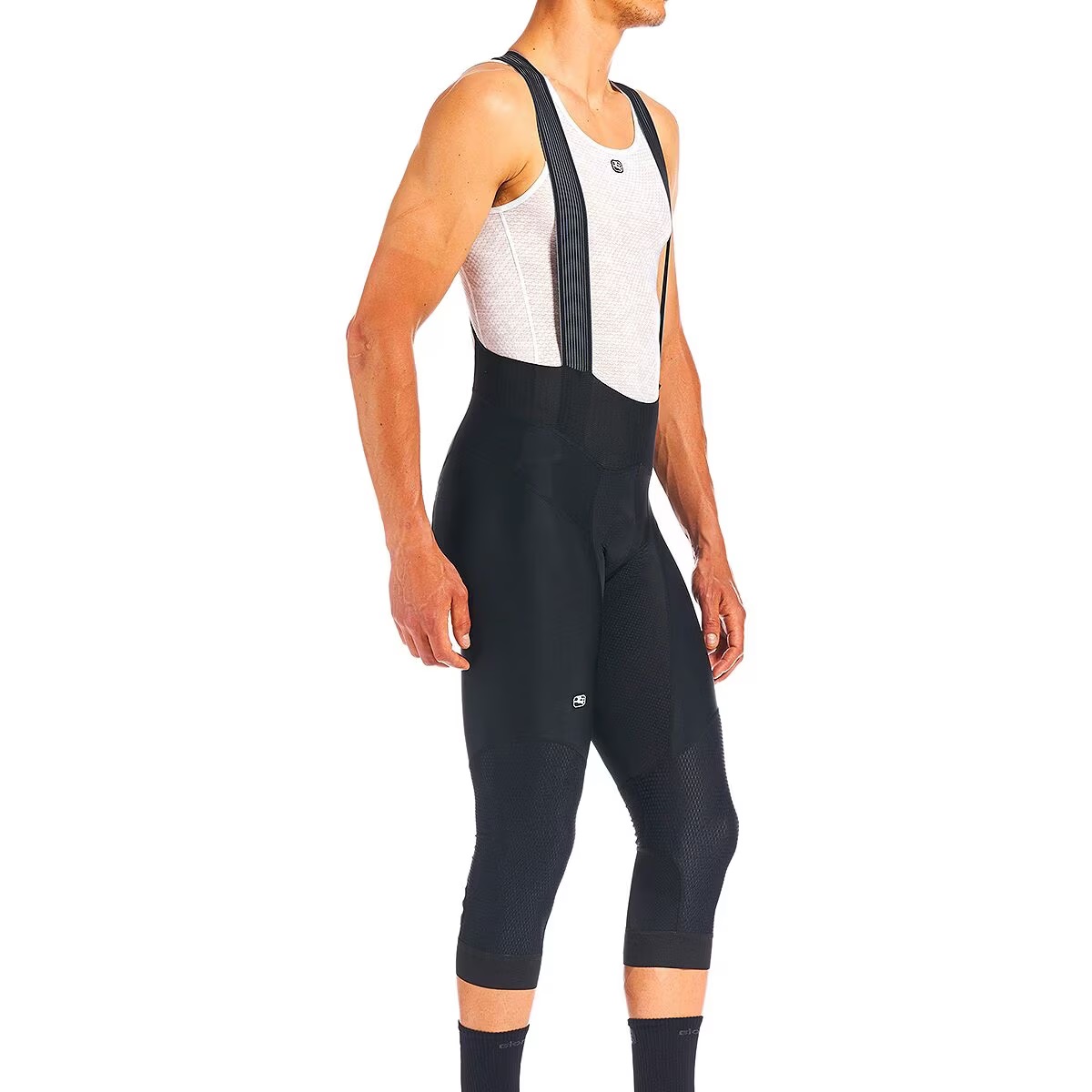 however, it's very important to at least keep your knees warm to prevent injury. We recommend knickers or knee-warmers, at a minimum, on any ride below 70º. Over the course of your cycling career, even in relatively mild Spring or Autumn weather engorgement of surface capillaries can put enough pressure on your knees to cause ligament damage. And though you may not feel it, your leg muscles will work more efficiently if you keep them warm, too.
however, it's very important to at least keep your knees warm to prevent injury. We recommend knickers or knee-warmers, at a minimum, on any ride below 70º. Over the course of your cycling career, even in relatively mild Spring or Autumn weather engorgement of surface capillaries can put enough pressure on your knees to cause ligament damage. And though you may not feel it, your leg muscles will work more efficiently if you keep them warm, too.
Wear tights on chilly days. In colder weather, fleece-lined tights provide additional warmth. There are also models, which include windproof and waterproof panels on the front. Consider bib versions of knickers (Right) or tights (Left) because the built-in supports ensure that the lower back stays covered (other types of tights can slip down as you ride).
Windchill
Wind, rain, snow and altitude changes affect your temperature drastically. Windchill worsens as the temperature drops. For example, riding 20mph into a 10mph breeze makes you feel 12 degrees colder at 40 degrees and 19 degrees colder at 20 degrees (see chart below). Be sure to wear several moisture-wicking layers so that you can add or remove layers as needed. You'll need fewer layers on climbs and when blessed with tailwinds and more layers for descents and headwinds.
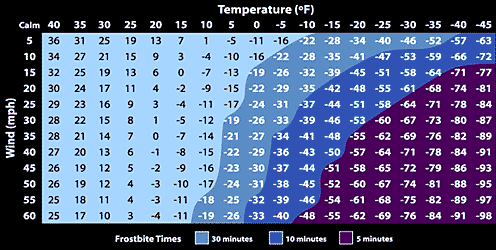
Windchill chart
Tips
Now that you can dress for the cold, here are some tips for winter cycling.
- Don't be enslaved by aesthetics, during the winter low light conditions prevail. Black may be the traditional choice for cycling, stick with highly visible bright colors and
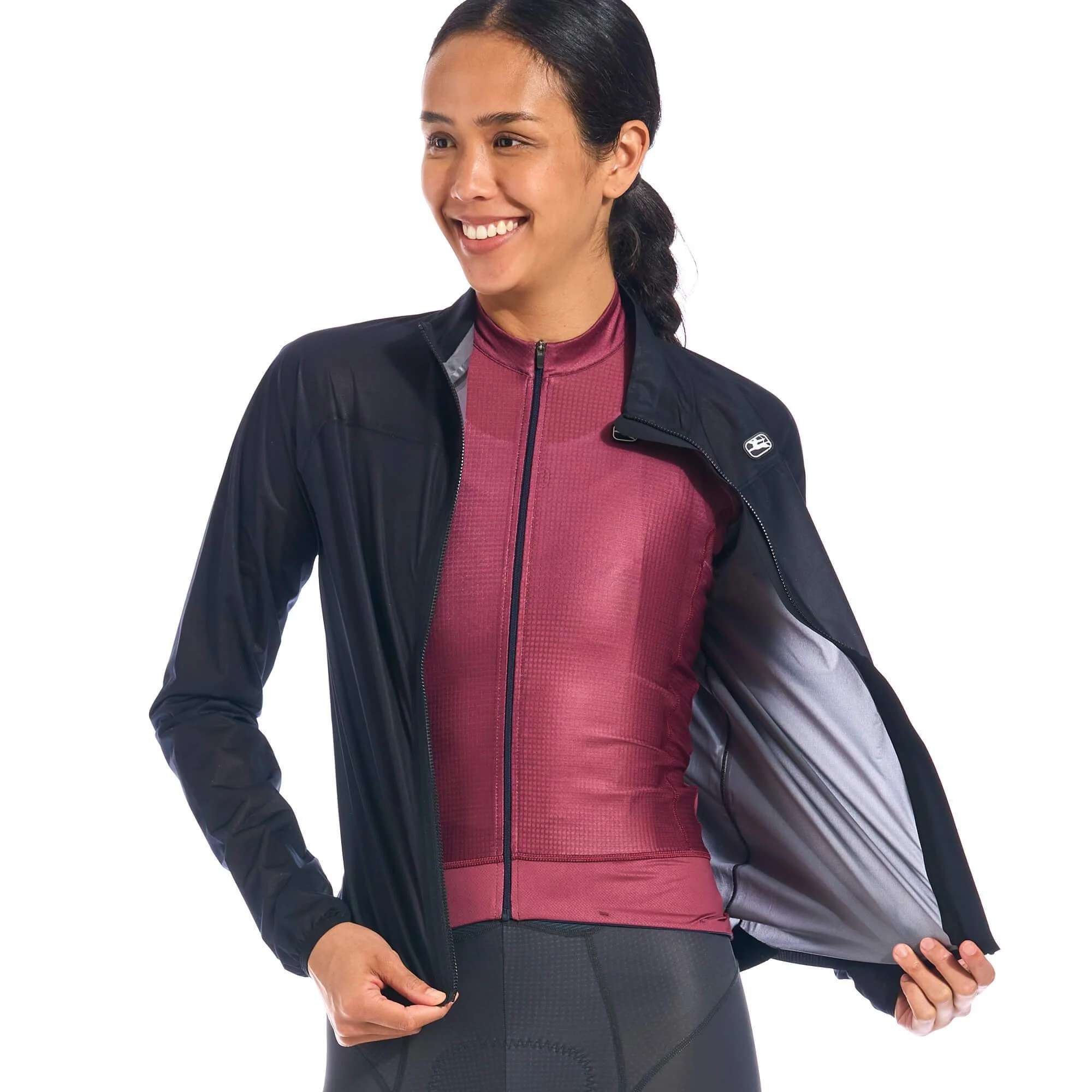 load up on lights. Winter gear comes in two colors: "Ugly But Smart" (on the left) and black (on the right, handsome but stupid) Don't be stupid, "Safety is the ultimate cycling aesthetic".
load up on lights. Winter gear comes in two colors: "Ugly But Smart" (on the left) and black (on the right, handsome but stupid) Don't be stupid, "Safety is the ultimate cycling aesthetic". - For muddy, slushy off-road conditions, try lowering your tire pressure by about 25psi, which will provide a much larger contact patch.
- Ice can be particularly challenging on and off pavement. Try to spot it early and avoid it, riding on patches of road that offer good traction.
- Be sure to keep your bike as upright as possible in turns because leaning reduces the amount of contact area on already slick surfaces.
- Don't brake in turns this can cause skidding and a loss of control.
- If you ride regulary in snowy conditions you may want to use studded tires, which include little spikes for excellent traction.
We hope the tips in this article help you ride year round. Cycling through the winter allows you to keep your fitness as opposed to trying to regain it in the spring. Plus, it'll help you stave off that dreaded cabin-fever feeling. We would love to help you enjoy these benefits. Come in and talk to us about winter cycling. Lakeside Bicycles is here to help.

